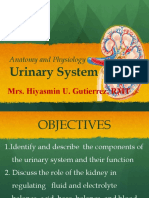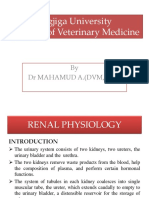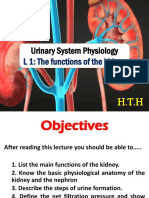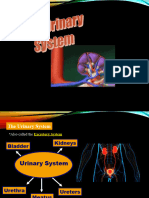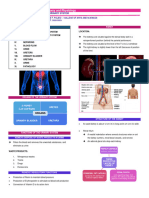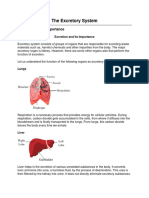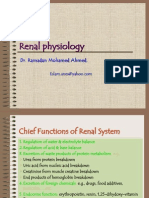0% found this document useful (0 votes)
29 views41 pagesKidney Function & Urinary System Guide
The document discusses the urinary system and kidney function. It provides an overview of the anatomy of the urinary system including the kidneys, ureters, bladder, and urethra. It then describes in detail the structures and functions of the kidneys, including filtration, reabsorption, and secretion by the nephrons. Key aspects covered are kidney anatomy, the renal portal system, tubular elements, and an overview of the three main kidney processes.
Uploaded by
Reneilwe MoshidiCopyright
© © All Rights Reserved
We take content rights seriously. If you suspect this is your content, claim it here.
Available Formats
Download as PDF, TXT or read online on Scribd
0% found this document useful (0 votes)
29 views41 pagesKidney Function & Urinary System Guide
The document discusses the urinary system and kidney function. It provides an overview of the anatomy of the urinary system including the kidneys, ureters, bladder, and urethra. It then describes in detail the structures and functions of the kidneys, including filtration, reabsorption, and secretion by the nephrons. Key aspects covered are kidney anatomy, the renal portal system, tubular elements, and an overview of the three main kidney processes.
Uploaded by
Reneilwe MoshidiCopyright
© © All Rights Reserved
We take content rights seriously. If you suspect this is your content, claim it here.
Available Formats
Download as PDF, TXT or read online on Scribd
/ 41



